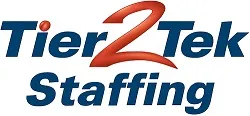Change Management Interview Questions with Answers

Change management is a critical field that focuses on preparing, supporting, and helping individuals, teams, and organizations in making organizational change. It includes methods that redirect or redefine the use of resources, business process, budget allocations, or other modes of operation that significantly change a company or organization.
Whether you are a hiring manager seeking to assess the aptitude of potential candidates, or a job seeker aiming to prepare for your interview, these questions are designed to cover a broad range of topics within change management. Here we provide a curated list of technical interview questions along with concise answers to help you navigate the complexities of change management roles.
What is change management and why is it important?
Change management involves the approach and strategies used to transition individuals, teams, and organizations to a desired future state. It’s crucial because it helps manage the resistance to change, ensuring that the changes are efficiently implemented and that they stick, ultimately leading to successful outcomes and the realization of new benefits.
What are the key components of a successful change management process?
The key components include:
- Communication Plan: Ensuring all stakeholders are informed and supportive of the change.
- Training and Support: Providing necessary training and support to those affected.
- Feedback Mechanisms: Implementing ways to receive and integrate feedback throughout the process.
- Change Agents: Identifying and empowering individuals who support and promote the change.
- Monitoring and Evaluation: Regularly tracking the progress of the change initiative and making adjustments as necessary.
What is the ADKAR model?
The ADKAR model is a goal-oriented change management model that allows change management teams to focus on specific outcomes or goals. The acronym stands for Awareness, Desire, Knowledge, Ability, and Reinforcement. This model helps ensure that each step of the change process is successful by addressing the needs at each stage.
How do you handle resistance to change?
Handling resistance involves:
- Listening to Concerns: Understanding the reasons behind resistance and addressing them.
- Engaging Stakeholders: Involving key stakeholders in the change process to gain their support and input.
- Communication: Providing clear and consistent information about the benefits and impacts of the change.
- Support Structures: Offering support and training to help individuals adapt to the change.
Can you describe the Lewin’s Change Management Model?
Lewin’s model consists of three major steps:
- Unfreeze: Preparing the organization to accept that change is necessary.
- Change: Executing the intended change.
- Refreeze: Ensuring that the change becomes permanent and the new habits, rules, or procedures are institutionalized.
What role does leadership play in change management?
Leadership is crucial in change management as leaders are responsible for setting the vision, communicating it clearly to all stakeholders, and motivating the organization to embrace the change. Effective leaders also provide direction, resources, and support needed to achieve successful change.
How do you measure the success of a change management program?
Success can be measured through various metrics, including:
- Employee Engagement and Support: The level of positive engagement and support from employees.
- Achievement of Goals: Whether the initial goals of the change management initiative were achieved.
- Performance Improvements: Any improvements in performance metrics post-change.
- Feedback: Positive feedback and low levels of resistance from stakeholders.
What are the common pitfalls in change management?
Common pitfalls include:
- Lack of Clear Vision: Not having a clear and articulated vision for the change.
- Inadequate Stakeholder Involvement: Failing to involve all relevant stakeholders in the change process.
- Poor Communication: Ineffective communication that leads to misunderstandings and resistance.
- Ignoring Culture: Overlooking organizational culture and how it influences change.
How important is feedback in the change management process?
Feedback is essential as it provides insights into how the change is being received and whether additional support or adjustments are needed. It helps in making the change process more adaptive and responsive to the needs and issues that arise during implementation.
What strategies would you use to ensure change is adopted and sustained in an organization?
To ensure change is adopted and sustained, strategies include:
- Continuous Training and Support: Providing ongoing training and support to address new challenges.
- Reinforcement Strategies: Using rewards or incentives to reinforce the desired behaviors.
- Regular Updates: Communicating regularly about the progress and successes of the change initiative.
- Involving Leaders: Ensuring that leaders continue to support and promote the change.
How can technology be leveraged in change management?
Technology can be leveraged to:
- Streamline Communication: Using digital tools to enhance communication and ensure consistent messaging.
- Training Solutions: Employing e-learning platforms for scalable and accessible training solutions.
- Data Analytics: Utilizing data analytics to monitor progress and measure the effectiveness of change initiatives.
- Collaboration Tools: Implementing tools that enhance collaboration and engagement among team members.
Common Technologies Used in Change Management

Change management utilizes a variety of technologies to facilitate and support the processes of planning, implementing, tracking, and reviewing changes within organizations. Here are some commonly employed technologies in this field:
- Project Management Software: Tools like Asana, Trello, and Microsoft Project help organize, track, and schedule the tasks and stages of change initiatives.
- Enterprise Resource Planning (ERP) Systems: Systems like SAP and Oracle ERP integrate various functions across the organization, providing a unified platform to manage change across departments.
- Customer Relationship Management (CRM) Systems: Platforms like Salesforce and Microsoft Dynamics CRM are crucial for managing changes that affect customer relationships and service delivery.
- Communication Tools: Applications such as Slack, Microsoft Teams, and Zoom facilitate real-time communication and collaboration among team members and stakeholders during a change process.
- Change Management Software: Specific tools like Prosci’s ADKAR Model software or ChangeScout help manage the human aspects of change, providing frameworks and resources for effective change management.
- Analytics and Decision Support Tools: Technologies like Tableau or Power BI enable data analysis and visualization to support decision-making and measure the impact of changes.
- Document Management Systems: Tools like Google Drive and SharePoint ensure that all documents related to change management are securely stored, easily accessible, and efficiently managed.
Key Expertise Areas in Change Management
Change management requires a diverse set of skills and expertise to effectively guide organizations through transitions. Here are some of the critical areas of expertise that professionals in this field often possess:
- Strategic Planning: Ability to develop strategic frameworks that outline the vision, steps, and goals necessary for successful change.
- Communication Skills: Proficiency in crafting and delivering clear, compelling messages that resonate with various stakeholders and support the change process.
- Leadership and Influence: Skills in leading teams and influencing stakeholders at all levels to embrace and drive change.
- Organizational Behavior Knowledge: Understanding how organizations work psychologically and socially, helping to predict, analyze, and manage the impact of change on people.
- Project Management: Expertise in managing projects, including planning, executing, monitoring, and closing projects related to organizational change.
- Problem-Solving and Analytical Skills: Ability to identify problems, analyze potential solutions, and implement effective resolutions quickly and efficiently.
- Adaptability and Flexibility: Being adaptable to changing circumstances and capable of adjusting strategies and tactics as needed.
- Training and Development: Skills in developing and delivering training programs that help individuals and teams acquire the skills needed for a post-change environment.
- Technology Proficiency: Knowledge of and ability to leverage technology that supports change processes, such as project management tools and data analytics platforms.
Need to Hire in Change Management?

If you’re looking to enhance your team with skilled change management professionals, Tier2Tek Staffing can connect you with top talent suited to your organizational needs.
